Mariton – Butternut Trees
by Tim Burris, Preserve Manager
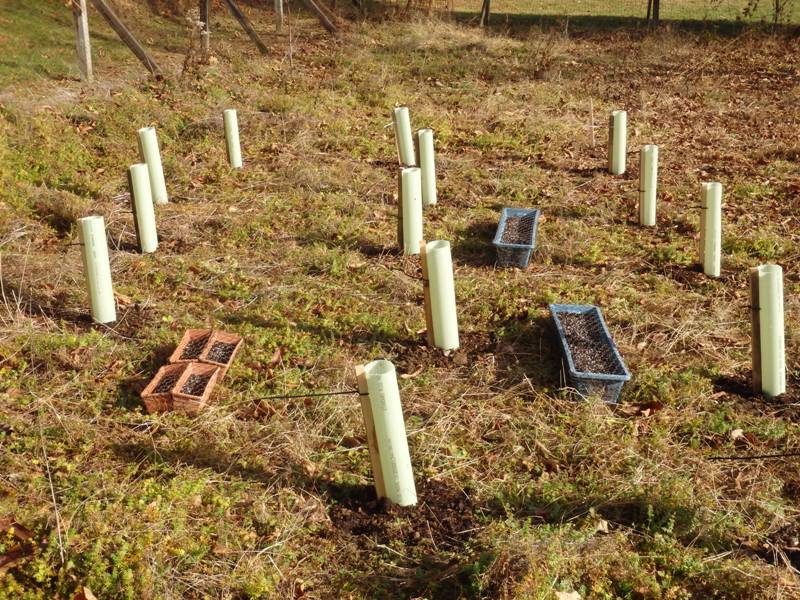
Butternut seeds inside the garden, protected from squirrels in 2015
In 2015, I met a member named Paul Felton on a hike. He is a retired forester who still gets excited by trees. We hit it right off, and later that fall he sent me a half dozen Butternut (Juglans cinerea) seelings, and a bucket of Butternut seeds. Josh Saltmer was my assistant then and we planted the saplings in areas impacted by Hurricane Sandy, and protected them from the deer. We planted the seeds in my old vegetable garden. The garden is deer proof, but we protected them with short tubes to keep the squirrels from digging them up (butternuts are really tasty).
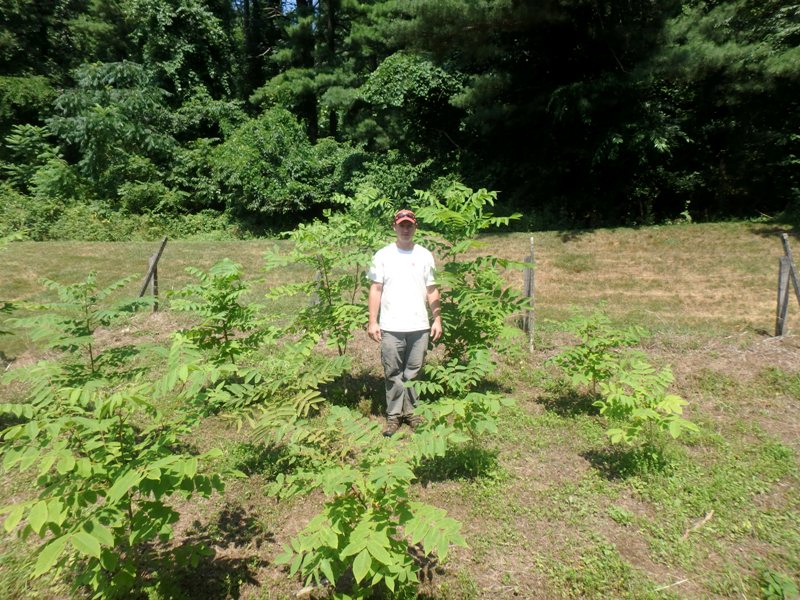
Tom Levendusky with seedlings in 2018
The following spring, 16 of the seeds sprouted. I meant to dig some of them up during the winter of 2017. As usual, things got hectic when the weather broke and we missed our window for transplanting. The same thing happened in 2018 and there was too much to do in March and April to move up the saplings.
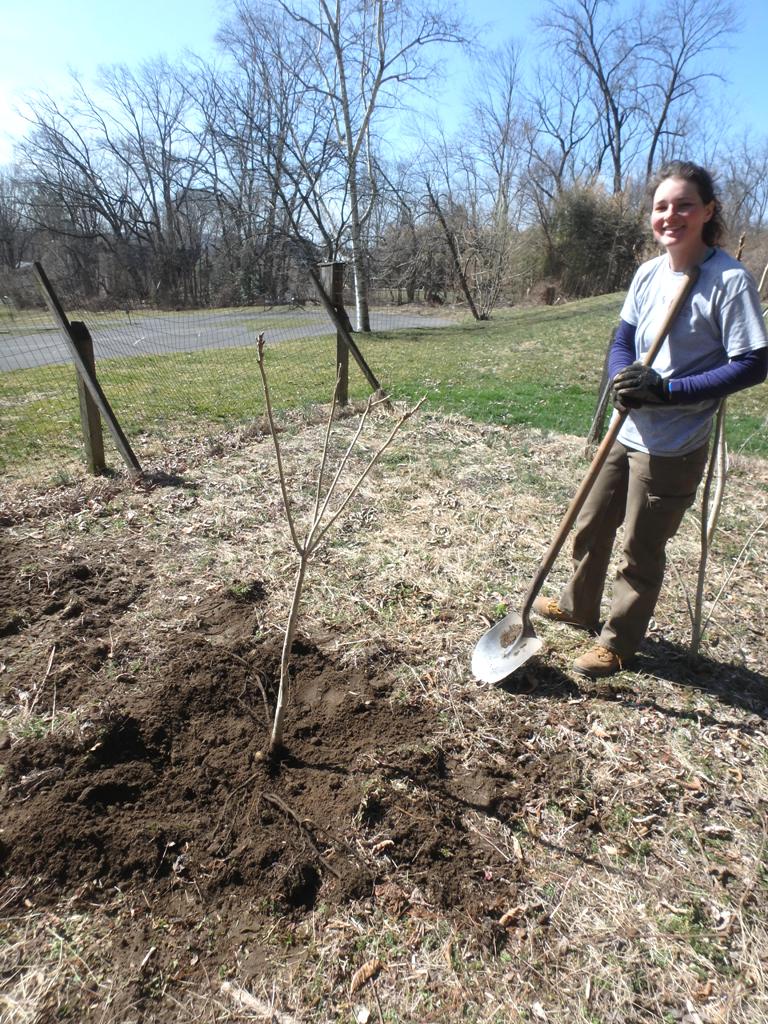
Assistant, Emma Schad, excavating the roots
This year, I pushed other things aside to dig them up and start transplanting. We will have to see how well they survive the trauma. Emma and I dug large circles around the trunks and then excavated the roots by hand. We couldn’t get everything, but we hope we got enough for them to survive.
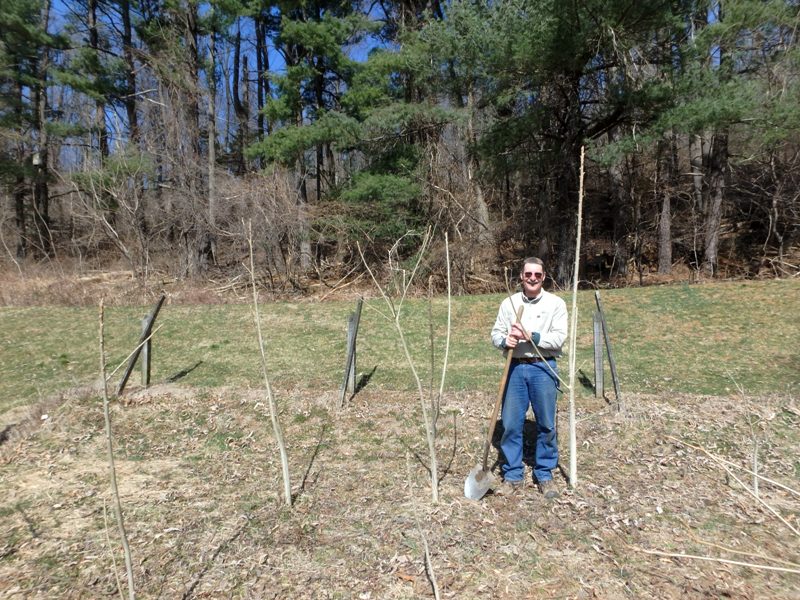
Three years’ growth from seed
We transplanted some of them in open areas around the edge of the yard. A few will go into open areas in the woods. These are actually young trees. Remember the tree I’m standing beside was a seed in the fall of 2015. That is only three growing seasons!
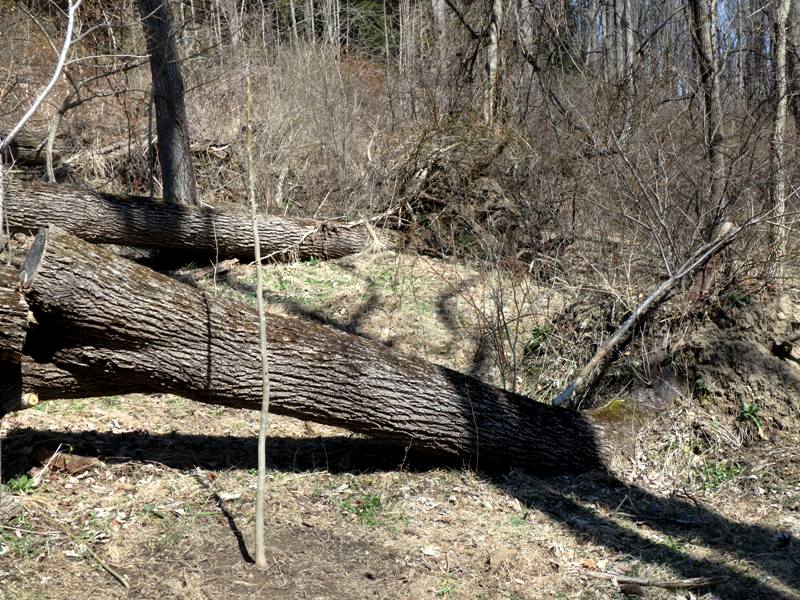
One of the transplanted seedlings at Mariton
Butternuts are dealing with a disease called Butternut Canker which usually kills the tree. I thought we had lost all the butternuts at Mariton to Butternut Canker, but I recently found one surviving along one of the trails. Mr. Felton gets his seeds from trees that he planted, and those trees so far are resistant to the disease. Hopefully, these transplanted trees will augment any trees that are still surviving in Mariton’s woods. If so, we will be restoring a species that was about to disappear from the woods.
